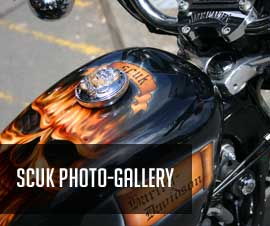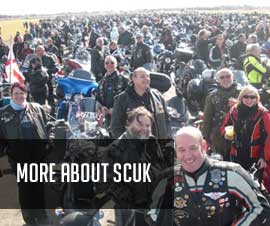We hold many events that have a special interest for our members from Hovercraft Flying, Big Ben to Battlefield Tour. Here is an example of one of those.

Over the years Surrey Chapter UK have held a series of tours visiting many battlefield sites including Crecy, Agincourt, the Somme, Verdun, Ypres, Passendaele and Normandy. To mark the Centenary of the start of World War One in August 2014 we became a partner organisation with the Western Front Association. We knew from Tony Shutt, the Vicar of Send in Surrey that buried in the churchyard is 2nd Lieutenant Robin Skene of the Royal Flying Corps who was the first Pilot to be killed during hostilities.
We decided to try and humanise the deaths of so many thousands of men of the RFC and RAF by drawing attention to the loss of the first air crew casualties of WWI. We liaised with the WFA to organise a series of services in England and France and include these in a four day commemorative journey on our Harley Davidsons.
This journey would also pay tribute to the thousands of despatch riders of WWI who were killed riding their motorcycles, including Harley Davidsons, while carrying reports, orders and tracing cables between the various HQs and the front lines. The British despatch riders were part of the Royal Corps of Engineers. When it was decided the WFA would take to France 85 wreaths to commemorate each of the regiments initially mobilised we were honoured to carry with us on our commemorative journey the wreath dedicated to the Royal Engineers. We would also carry wreaths to lay on behalf of SCUK at each service.
The journey started at 09.00 on 12 August at Netheravon Airfield in Wiltshire, where Robin Skene and his passenger Air Mechanic Raymond Barlow had been killed during take-off exactly 100 years before on 12 August 1914. When they took off with the squadron that morning heading towards Dover the aircraft flew very tail down and then crashed. During the service an army parachutist ‘dropped in’ with a wreath and it was very moving to lay our wreaths under a RFC 1913 sign and at the foot of the door which still has the brass plaque announcing this to be the ‘Officers Mess’. It was very poignant to hear read out on that spot a dedication written by Robin Skene’s great Nephew.
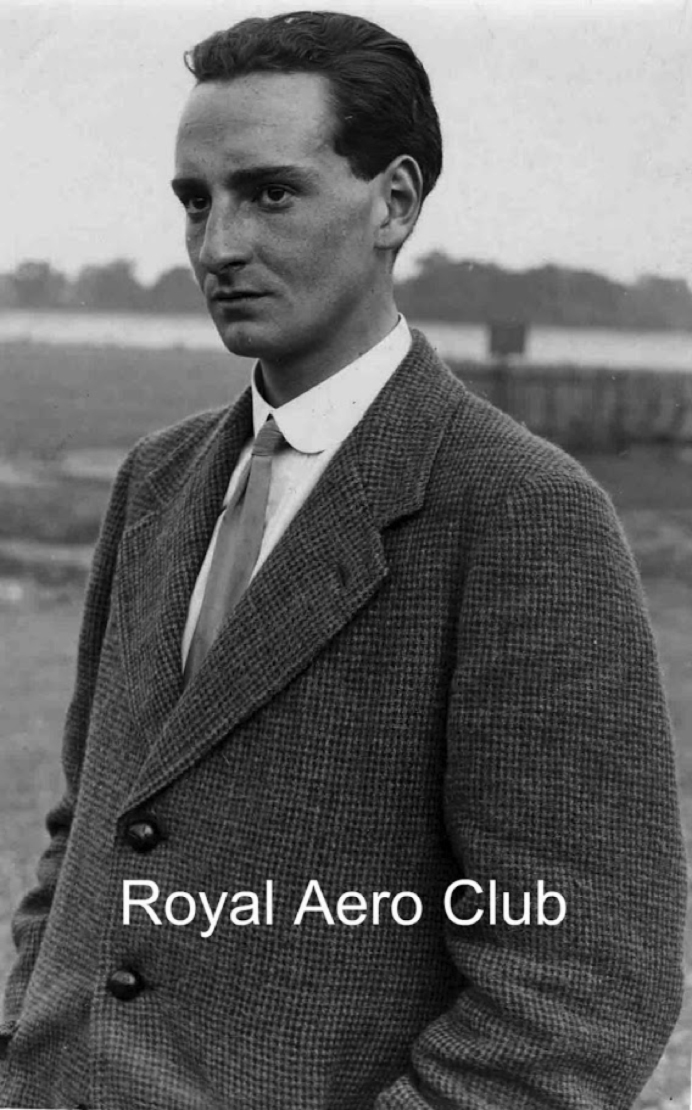 After giving various press and TV interviews we rode to Raymond Barlow’s graveside in nearby Bulford and paid tribute to one of the RFC many ground staff. We arrived at Send in good time for the midday service and most people there including the Mayor of Guildford and other local dignitaries had a tear in their eye as the Rev Tony Shutt read aloud a message from Robin Skene’s great Niece and a member of SCUK read out ‘High Flight’ by John Magee. Philip Hammond MP, then the newly appointed Foreign Secretary, read The Exhortation.
After giving various press and TV interviews we rode to Raymond Barlow’s graveside in nearby Bulford and paid tribute to one of the RFC many ground staff. We arrived at Send in good time for the midday service and most people there including the Mayor of Guildford and other local dignitaries had a tear in their eye as the Rev Tony Shutt read aloud a message from Robin Skene’s great Niece and a member of SCUK read out ‘High Flight’ by John Magee. Philip Hammond MP, then the newly appointed Foreign Secretary, read The Exhortation.
Robin Skene - Photgraph courtesy of Flight magazine.
On we rode to attend our fourth service that day at 15.00 at the RFC memorial on a cliff top near Dover Castle. Unfortunately it was so windy that the hoped for fly past of a WWI Replica aircraft could not take place. However, the presence of a large numbers of cadets and many others such as the Lord Lieutenant of Kent showed the importance people young and old attach to remembering the events of WWI.
When we arrived at Aerodrome d'Amiens-Glisy on the second day we were met by a large crowd of people including many dressed in the uniforms and clothes of the era, a Welsh choir, the Somme Pipe Band and eventually 6 Tiger Moths. As these old bi-planes flew over head it really provided a finishing touch to the drum head service.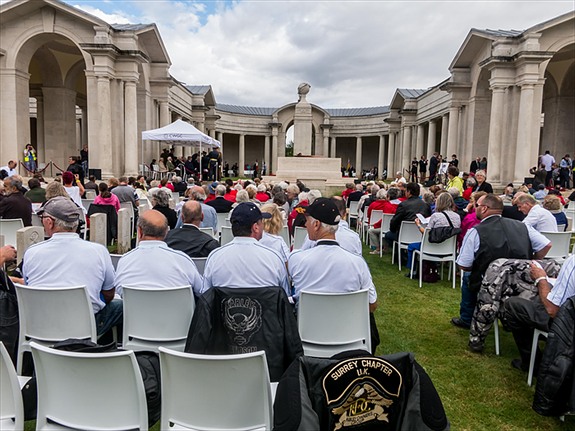
In the afternoon we rode to the Faubourg d'Amiens Cemetery & Flying Services Memorial in Arras for the biggest and most formal of the services. It included acts of reconciliation with high level representatives from UK, France and Germany. It was also a forward looking and uplifting event as many of the readings were given by youngsters representing the future generations and it finished with a flypast by a RAF Tornado.
On day three we visited the CWGC Saint Symphorien cemetery which is rightly hailed as one of the most beautiful and striking war cemeteries on the Western Front. The cemetery was originally started by the Germans in August 1914 after the Battle of Mons. Soldiers of both sides are buried here including Private John Parr the first British army casualty of WWI who was killed, aged 20, on the 21 August 1914. Also buried here is Private George Ellis who was killed on 11 November 1918 and is believed to have been the last British casualty.
On day four we completed our commemorative journey by laying our final wreath at the grave of Edward Baxter at the CWGC Fillievres Cemetery. He was a passionate motorcyclist who pre-war had entered the Isle of Man TT and other prestigious competitions. Starting WWI as a Despatch Rider he was later promoted and won his VC posthumously as a Second Lieutenant in the Royal Engineers Regiment.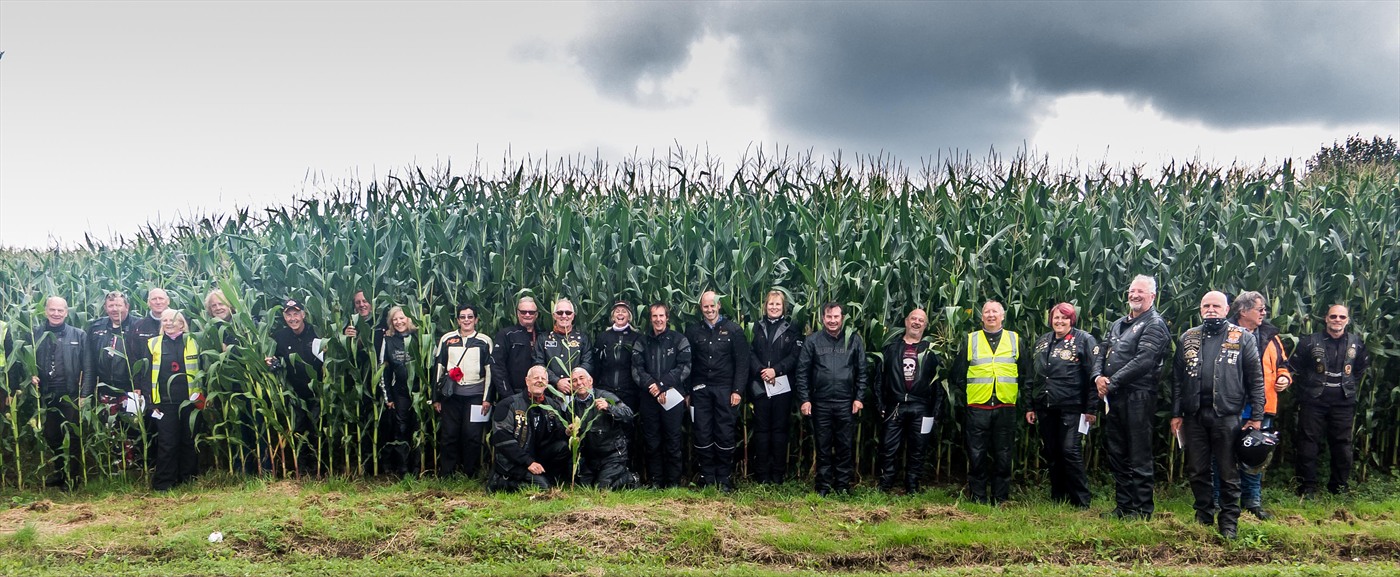
Although the subject of battlefields can be a bit sombre we always try to lighten the atmosphere with laugh and a bit of fun as we did beside Fillievres Cemetery.
Last Update: Mon 22 Apr 2024 - 20:32
